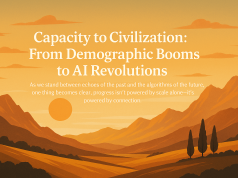As the world continues to embrace the flexibility of gig work, the non-profit sector is experiencing a seismic shift in how it operates and staffs its organizations. The proliferation of the gig economy has opened up new avenues for work, but also presented a set of challenges for the traditional model of employment, especially within mission-driven fields. This juxtaposition is redefining what social impact jobs look like and how they function, creating a ripple effect through communities and the workforce alike.
The rise of gig work in non-profits can be seen as both a boon and a bane. On one hand, it allows organizations to tap into a larger pool of talent, fostering inclusivity and diversity in the workplace. Freelancers and independent contractors bring a myriad of skills and fresh perspectives that can invigorate non-profit initiatives. By leveraging gig workers for projects, campaigns, and administrative functions, non-profits can scale their efforts with agility, responding to societal needs with more immediacy than ever before.
On the other hand, the gig economy poses significant challenges to job security and employment benefits within the sector. Workers accustomed to full-time positions with health insurance, retirement plans, and stable income may find themselves navigating a more precarious employment landscape. For non-profits, this shift can impact employee loyalty and retention, potentially affecting the continuity of service and depth of expertise within the organization.
Non-profit leaders and workers are at a crossroads. Embracing the gig economy could mean democratizing the opportunities within the sector, allowing for more people to contribute to social good without the barriers of traditional employment. Yet, there’s a critical need for safeguarding the sustainability of the sector and ensuring that those who dedicate themselves to its cause can do so without sacrificing their financial well-being.
Experts suggest that non-profits can navigate this change by embracing a hybrid model of employment. Such a model would balance the use of gig workers for specific tasks with the retention of a core full-time staff to maintain institutional knowledge and stability. This approach requires thoughtful policies that address fair compensation, work-life balance, and benefits for all workers, regardless of their employment status.
Furthermore, there is a space for innovation in how non-profits fund and manage their workforce. This might include the development of pooled resources for independent workers, such as collective insurance and retirement plans, or the establishment of partnerships with other organizations to share talent and resources in a cost-effective manner.
As non-profits recalibrate their operations to align with the evolving gig economy, the sector as a whole must also consider its impact on the communities served. The essence of non-profit work is to uplift and support; therefore, the sector must ensure that in its adoption of new employment models, it does not inadvertently exacerbate the socioeconomic disparities it aims to address.
In conclusion, the intersection of non-profits and the gig economy is a complex and evolving story. It presents an opportunity to reimagine what social impact work can look like in the modern age, offering pathways to engagement for a more diverse workforce. Yet, it demands careful consideration of the values at the heart of non-profit work and the foundational need for job security among those who heed the call to serve. As we continue to witness the reshaping of the work, worker, and workplace, the non-profit sector must rise to the challenge, ensuring that its embrace of the gig economy strengthens, rather than undermines, its mission to create a positive social impact.


























